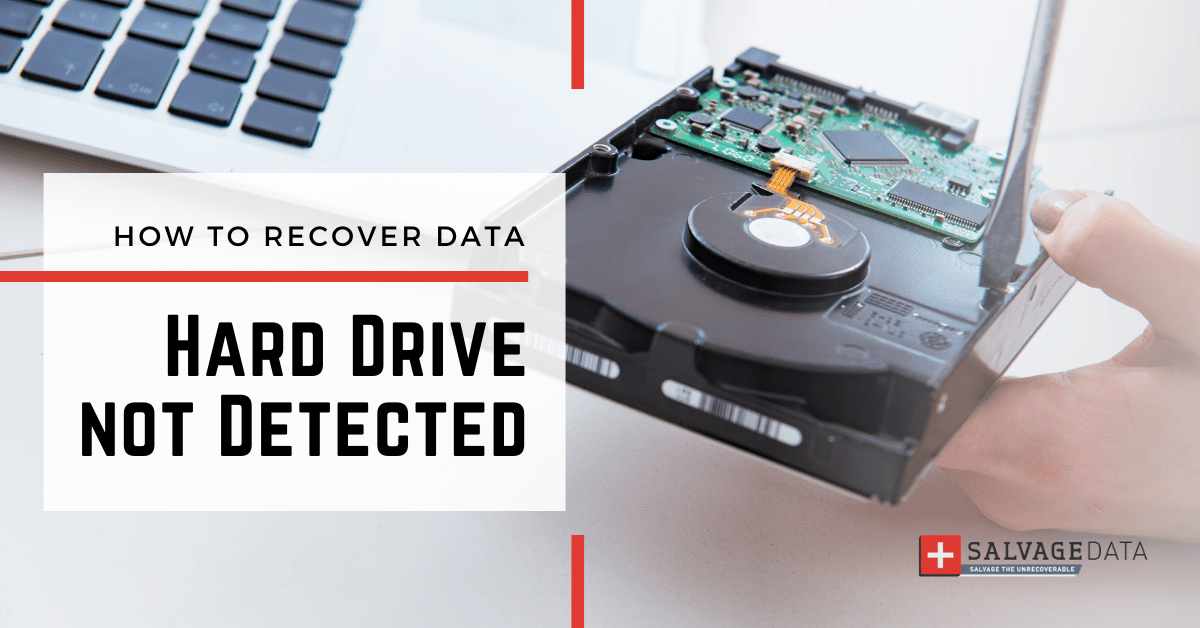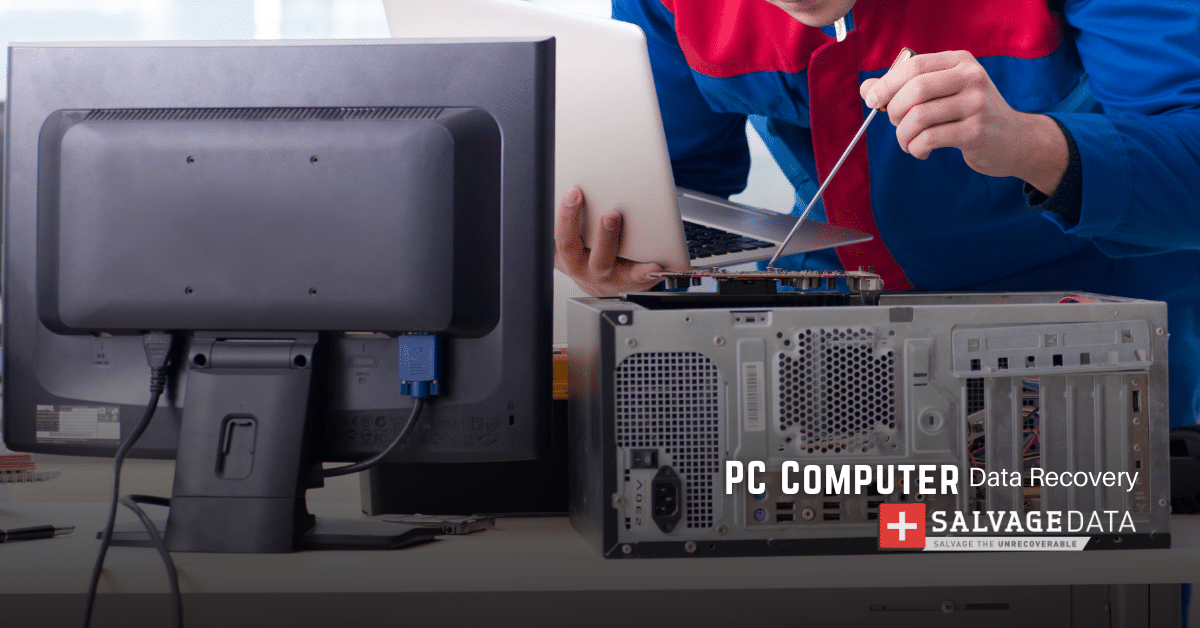Recent Articles
How To Recover Overwritten Files
The Snowflake Data Breach: A Comprehensive Overview
Mac Not Recognizing External Hard Drive: Quick Fix Solutions
How Multi-Cloud Backup Solutions Can Prevent Data Disasters
Capibara Ransomware: What is it & How to Remove
What Should a Company Do After a Data Breach: The Ticketmaster Incident
Secles Ransomware: Removal Guide
What To Do When Your Chromebook Freezes
How to Create Hyper-V Backup
What Is The Best Data Recovery Software For PC

I think there's an issue with my storage device, but I'm not sure Start a free evaluation →
I need help getting my data back right now Call now (800) 972-3282
Hard drives, aka HDDs, are highly efficient storage devices for daily data writing/reading or to use for backup. These devices are trustworthy to keep your data safe and accessible. However, it doesn’t mean they are error-free.
Sometimes errors can indicate the hard drive is failing, while it can also have errors with an easy-to-fix issue. One error manifestation is the frustrating “hard drive not detected” message.
The hard drive not detected message can originate when you connect to the hard drive, yet the computer can’t find it. It may show up when you boot up your computer and see a “boot device missing” error message on the system setup. Or it can appear when you connect your external hard drive and a message box pops up to “initialize” or “format” the disk before you can use it.
Your hard drive not showing up can be frustrating and your first thought can automatically go to the fear of data loss. But you can recover data even from a not detected hard drive.
Top Summary: It can be very frustrating when your connected hard drive doesn’t show up, especially if your drive has important data on it. Learning the most common causes for your HDD not being detected can prevent and also help you recover any data and restore your device.
Most common causes for not detected hard drive
Even though your hard drive can stop showing up on your computer system with no warning, it doesn’t mean you lost it. When your device can’t read the hard drive, the best action to take to correct the error is to detect what’s causing it.
These solutions work for HDD from any manufacturer, including Seagate hard drives or WD hard drives not being detected.
1. Unpowered hard drive
When not connected the right way or malfunctioning, the power cable can prevent the hard drive from showing up on your devices when connected. You can check the cable connection or try a different power cable to verify if this is your case.
When the hard drive is external, you can try swapping out the USB cable. If the drive draws power from an external AC adapter, try swapping that out as well.
2. Not properly connected the data cable (IDE / SATA) to the hard drive
Much like the power cable, a not fully connected data cable can prevent detecting the hard drive. The same goes if the cable is not working because it’s damaged or for other reasons. Here, switching to a new cable should help you continue using the drive.
3. Corrupted or damaged hard drive
Your hard drive can show signs of being corrupted, with either a mechanical or firmware failure.
When movable parts of the hard drive stop working, it’s a mechanical failure. There are several reasons for this, such as if you accidentally dropped your device. Unusual sounds, heating, and computers not detecting it can indicate this type of damage to the hard drive.
4. The operating system is not detecting the hard drive
Many are the reasons for your OS not detecting the hard drive. The problem origins can be on the hard drive itself, can also be a faulty connection, or in BIOS settings. For all, there’s a solution.
For example, sometimes your drive is not enabled on BIOS and all you have to do is enter the BIOS setup and turn on your system to find the HDD.
Summary: Learning how your hard drive can present the not detecting error is the first step to avoiding it. Providing regular backup is the most effective data loss prevention act you can take. The important thing is that for all causes of hard drives not being detected, there’s a solution. Some are actions you can do yourself to recover data, others require professional data recovery.
Solutions for the hard drive not detected issue
Since there are several causes for hard drives not detecting on a computer, we need several solutions to fix the error.
Solution 1: Check BIOS for hard drive detecting
Checking if your computer can detect your hard drive in BIOS is the first test you should do when the system is not seeing the hard drive.
To do this, restart your computer and press the key that allows you to enter BIOS setup (usually F12, Delete, or Esc).
Once you are in BIOS, look for a section called “Integrated Peripherals”. Enable the USB controller, restart the computer again, and see if the hard drive is showing up.
Solution 2: Connect the hard drive to another computer
In case you can’t get your hard drive to show up in BIOS or if your HDD is not being detected by Windows, you can try connecting the hard drive to another computer. If the other computer can detect the hard drive, it means that the problem is with your computer, not with the hard drive.
Try cleaning your USB port and updating your drivers to make sure your computer can read the external hard drive. You can also try to reformat the drive, in case it’s set with a format your computer can’t read.
Solution 3: Change the drive’s letter
Each drive on your computer has a letter. So, if your internal or external HDD has an assigned letter that conflicts with another one on the computer, it will not be detected.
To fix this, you’ll have to assign a new drive letter.
Open Disk Management. There, the conflicted drive is shown as New Volume. Right-click on it to select “Change Drive Letter and Paths”. In the new window, click Change and choose a new letter to assign to it.
Confirm the changes.
Solution 4: Diagnose by the sound that the hard drive is making
If your computer’s hard drive isn’t spinning properly, you can remove the drive from the enclosure and try using an external enclosure. Be careful so you won’t damage your device.
For both internal and external not detected hard drives, you can use your hearing to detect some issues.
HDDs make a normal sound when you’re using them and when you turn them on. However, louder or unusual sounds are signs of damage.
In this case, the best action is to look for professional help.
Solution 5: Data Recovery Software
Using recovery software is one last resort on the “do it yourself” data recovery. You can install and scan your device to restore your files.
It will work as long as the cause for your hard drive does not show is not mechanical or physical damage.
Solution 6: Call a data recovery service
Sending your device for a free in-lab evaluation will tell you which is the cause for your hard drive not showing up. Recovery services also have a higher chance of getting your data back to you.
We highly recommend this solution when you have valuable data, with no recent backup, and cannot risk data loss.
Certified experts at SalvageData can scan your device, detect the cause of the damage, and recover your data.
Summary: Our first recommendation so you can protect your data is to always have a backup. When not possible, you can try to manage the hard drive or PC configurations to access your device, or you can send it to a data recovery service. You can also learn more about the main causes of a corrupted HDD so you can prevent and fix common issues.
Contact SalvageData 24/7 for a free in-lab evaluation of your HDD. Our experts are ready to help you recover your hard drive data.












